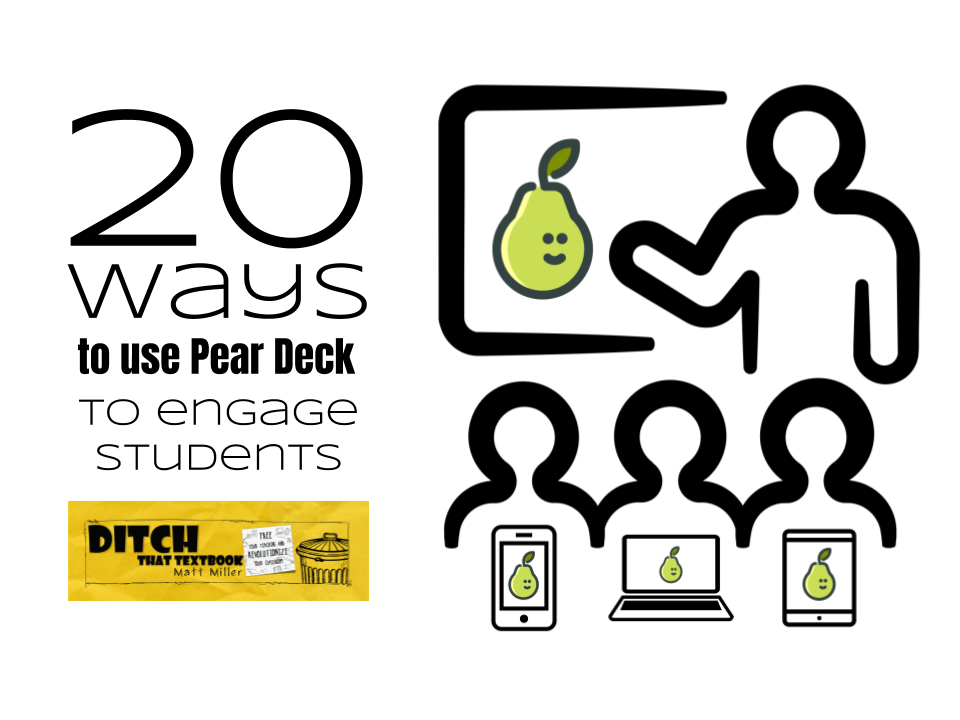
Pear Deck flips the traditional lecture by actively engaging students in real-time. Ask questions. Students answer. Want to use Pear Deck in your class? Here's how.
The standard lecture has plenty of detractors, and rightfully so. Done poorly, it can be an uninspired stream of facts, delivered in sit-and-get style that get forgotten quickly.
However, we can turn the standard lecture — and its tool of choice, the presentation slide! — on its head.
The result can be students actively working with new ideas. Hands-on. Right away.
Presentation slides can be a drag.
But when students (and teachers!) have something interactive to do with them, it changes the game.
That’s what I love about Pear Deck. And, of course, the best news: much of what I show you in this post can be done with the free plan!
(Note: I have no official relationship with Pear Deck, and I’m not being paid for writing this post. I’m just a Pear Deck user who loves the potential for it and wants to share it with others! I was given a Pear Deck premium account for review.)
What is Pear Deck?
It’s a way to turn your presentation slides into interactive activities for your students. (It also works wonderfully with teachers in professional development!)
If you're using Google Slides, Pear Deck makes it super easy to get started. Pear Deck has created a Google Slides add-on. This makes it SUPER easy to make your slides interactive right from Google Slides.
- Open a Google Slides presentation.
- Click on the “Add-ons” menu and “Get add-ons …”.
- Search for “Pear Deck” and click the blue “+ FREE” button.
- Load up the Pear Deck sidebar menu. (It’ll look like the image above/right.)
Here’s a video that shows how to use Pear Deck with Google Slides:
If you're using Microsoft PowerPoint, it's just as easy. Install the Pear Deck add-in to PowerPoint. You'll get a sidebar that lets you add interactive questions and pre-made templates to your slides quickly and easily. You can also add Pear Deck to Microsoft Teams.
How do I build slides with Pear Deck?
That’s pretty easy, too. If you’re using Google Slides, just create the slides that you want to display to your students. Then, use the sidebar menu to add interactive elements to each slide.
(You can do all of this at peardeck.com with PowerPoint slides, too.)
The bonus with Pear Deck: You can turn any of those slides into interactive slides. Some of the options include having students …
- enter text
- enter a number
- choose from multiple choices
- draw a response (premium only)
- interact with a live web page
- drag an icon to a specific part of the slide (premium only)
Pear Deck has a slide library where you can choose pre-created activities …
- for the beginning of a lesson (check prior knowledge, ask what students are curious about)
- during the lesson (summarize, assess learning, gauge understanding)
- at the end of the lesson (retell what they learned, share feelings)
Set up your slide deck the way you want. The next step — let’s get students connected to it so they can interact!
How do I run a slide presentation?
Once all of your slides are designed and ready to go (including interactive slides), it’s as easy as clicking “Present with Pear Deck” in your sidebar menu.
It will create a screen you can display to students on your projector, interactive display or flat panel. It will prompt students go to joinpd.com (think “join Pear Deck”) and enter the join code.
When you’re ready to start, your slides will be displayed on the students’ devices. From the teacher device, you can …
- Go to the previous or next slide
- See all slides with the slide navigator
- Project student responses
- Lock or unlock a slide
- Add a new question
- Make a slide full screen (under “more”)
- Open the teacher dashboard in a new tab (under “more”)
- Open the teacher dashboard on another device (under “more”)
- End the session (under “more”)
From there, you display the slides. Students interact. You do what you want with student responses.
Using the new Pear Deck add audio feature
The new Add Audio feature lets you record or upload audio files to lessons. Students can listen to those audio files on their devices. This is a really helpful feature for remote learning -- especially when students are using Pear Deck in student-paced mode.
Teachers spoke and we listened...and now your students can listen, too! #PearDeck Student-View Slides now include audio!
— Pear Deck (@PearDeck) April 28, 2020Layer audio over any slide type, in any Pear Deck for Google Slides lesson.
This new feature is now live!#remotelearning pic.twitter.com/2ycV0BgX76
Ideas for using the new add audio feature:
Explain answers. When you talk about a problem students need to solve -- or a question that needs answered -- how you arrived at your answer is important. Having a teacher-guided answer with explanation can help students understand.
Read a story. Record audio of your voice while you read a favorite story -- or a new story! -- to students remotely. Students can even download the audio file to listen to later.
Guide pronunciation. Model how to pronounce new terms and vocabulary words in an audio file.
How to use Pear Deck for remote learning
Pear Deck gives you interactive options when teaching remotely.
- Gather students on a video call with Skype, Zoom, Google Meet or Microsoft Teams.
- Share your screen with an interactive Pear Deck presentation.
- Students join the presentation in a separate tab (or in a window side-by-side with the video call).
- Students follow along with the presentation and interact with the slides. You talk through the presentation on the video call.
Student-paced mode for Remote Learning
Students can progress through interactive Pear Deck slides independently in student-paced mode.
- Create slides.
- Share them with students with a deadline to finish them.
- Students work through the slides and interact with them.
- You watch their progress through Pear Deck.
- When they're finished, Pear Deck gives you results to guide your instruction.
In the video below, I gave a webinar on how to use student-paced mode. Check it out to see how student-paced mode works, how it can be used for remote learning, and for answers to common questions.
Flip through the webinar slides (below) to get a feel for how student-paced mode works.
How can I use Pear Deck?
Here are a bunch of ideas, from the basic to the geeky. On most of these, I’ll default to the free question types (and will note which ones require a premium account).
Ideas for the classroom
1. Ask students what they already know about the topic with a text question. (You might be surprised what they already know … or what they don’t know!)
- Use the text slide in the “Beginning of class” slide library.
2. Ask students if they’re ready to move on with a multiple choice question. (This sure beats raising hands, where you don’t always get honest answers.
- You can reword the draggable agree/disagree slide in the “During lesson” slide library.
3. Draw out a mind map to diagram what you’ve been studying.
- Use the mind map slide in the “During lesson” slide library.
4. Retell what you’ve learned that day in your own words. This is another digital version of the ultra brain-friendly “brain dump” I described in this post.
- Use the text slide in the “End of lesson” slide library.
5. Ask students to create a new ending/outcome for something you’ve studied that day.
- Create a new text slide.
6. Ask students to describe their thinking process instead of providing the answer. (A focus on the process can illuminate student understanding better than an answer many times.)
- Create a new text slide or a drawing slide (premium).
7. Have students put items in order (chronological, sequential, etc.). List the items on the slide and have students write them out in the correct order.
- Create a new text slide.
8. Predict what happens next in a video or a story. Show a short video clip or an image … or stop in the middle of a story in class.
- Create a new text slide.
9. Label a diagram. Add an image of the diagram (without labels) on the slide. Have students add the labels.
- Create a new drawing slide (premium) to draw labels … or, put numbers on your image where you want students to label and have them label with a text slide.
10. Create an advertisement. You add an image or two to a slide. Have students add text to the slide to create a compelling ad based on what you’ve learned.
- Create a new drawing slide (premium) to add text … or, use a text slide to have students write what they would put on the ad.
Ideas from the Pear Deck library
Pear Deck has some great users doing very cool things, too! Here are some from their great library of examples from the classroom …
11. Teach parabolas / quadratics using Super Mario Bros. (via MrOrrIsAGeek.com blog).
12. Helping students understand Anglo Saxon poetry with thought-provoking guided questions (via Melissa Pilakowski).
13. Get students interacting with literature, art and music from the Romantic Era (via Pear Deck).
14. Teach coordinate graphs with draggable dots (premium) and a coordinate plane. Here are some Pear Deck math templates to give you more ideas.
15. Teach grammar with draggable icons (premium) by displaying a paragraph and having students identify different parts of it. See how in this How ELA Teachers Use Pear Deck document.
16. Display a short passage of text with a drawing slide (premium). Ask students to use the highlighter to highlight an example and the text box to explain why they picked that example.
17. Count the number of forces on the object in a diagram like the one below. Ask students to enter the number in a number slide. (via Pear Deck) See more in this How Science Teachers Use Pear Deck document.
18. Have students in a world language class translate a sentence with a text slide. Then, see how the same idea can be translated differently in a variety of ways. See more in this How World Language Teachers Use Pear Deck document.
19. Add a map to a draggable (premium) slide — or add a map the draggable slide in the “During lesson” slide library. Have students identify locations on the map. See more in this How Social Studies Teachers Use Pear Deck document.
20. Use a map like in the example above … but use a drawing slide (premium) and have students circle / draw an outline around certain regions you’ve been studying.
Give me some ninja Pear Deck tricks …
Absolutely!
1. Customize the slide library. Use the pre-designed slides by Pear Deck, but add your own customizations. For instance, instead of a simple happy/sad face to ask students how they feel, add emojis or memes!
2. Do vocabulary the Pear Deck way. Check out “Pear Deck Vocabulary” for an interactive way to do flashcards with your students. (It’s part of the free plan!) It integrates with Quizlet and Merriam-Webster to create lists in a snap. Students can even help you illustrate flashcards with the “Flashcard Factory.”
3. Get up to speed quick with a webinar. Pear Deck offers teachers free webinars on Tuesdays and Wednesdays at 11 a.m. (lunch break!) and 4 p.m. (school’s out!) Eastern time. Learn the features and best practices from the Pear Deck pros.
4. Insert a new question on the fly. Classroom discussions are organic things, aren’t they? If you think of a question off the top of your head — or if your students do — you can add it to your Pear Deck presentation. Just use the “Add new question” button. (It looks like a speech bubble with a plus sign.) You can change your current question to a different type of question, re-ask the same question, or start a brand new question. See below (or here’s a quick YouTube video to show you how).
LOOKING FOR MORE PRACTICAL IDEAS LIKE THESE? GET 3 FREE EBOOKS FULL OF RESOURCES!

For notifications of new Ditch That Textbook content and helpful links:
Are you looking for quality, meaningful professional learning that both equips and inspires teachers?
Matt provides in-person and virtual keynotes, workshops and breakout sessions that equip, inspire and encourage teachers to create change in their classrooms. Teachers leave with loads of resources. They participate. They laugh. They see tech use and teaching in a new light. Click the link below to contact us and learn how you can bring Matt to your school or district!
Is Matt presenting near you soon? Check out his upcoming live events!

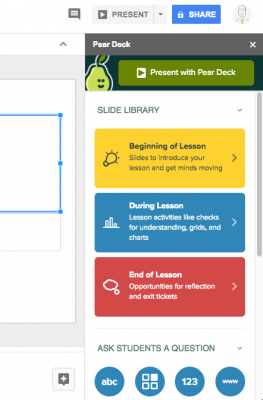
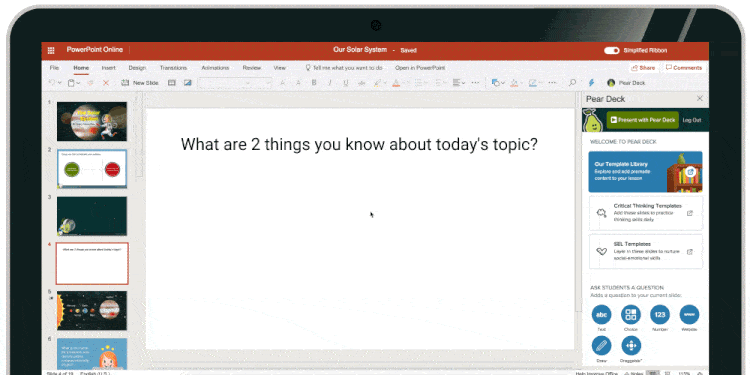
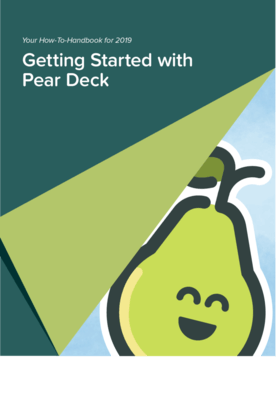
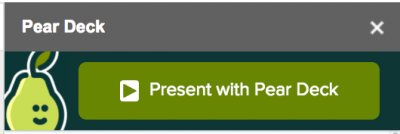
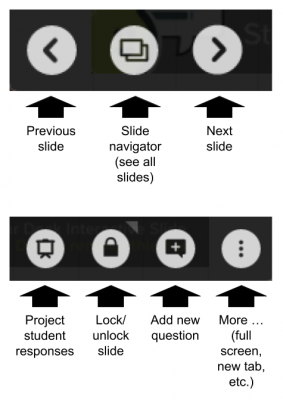
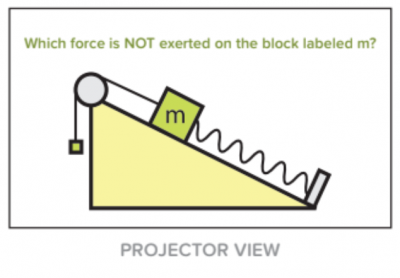
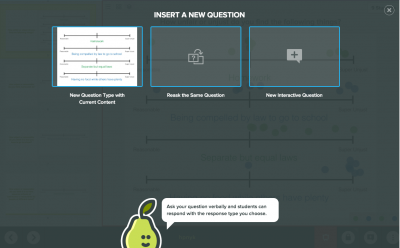


Hi Matt. I really enjoy your valuable information on how to make things more interesting in class, utilizing the various tools. Would it be possible for you to separate the ideas by K-2, 3-5, 6-8, and HS? Or a target group in which the tool would work best? Thank you for all your information, videos, templates, and wonderful ideas!
I’m not sure how this would work,but it’s worth a try
This is a great tool for teachers
It would be awesome to see students utilize this!
Wow, I just got smarter about how students can engage without having to raise their hand to answer a question and other student won’t know they didn’t get it right.
Wow! This is really interesting and I would like to see students utilizing this.
This sound fabulous. I am retired from teaching, but have friends who teach. I was talking to my friend who is just starting to use pear deck. I attend yearly company meetings where I listen to endless power points. Can I join pear deck on my own to make some sample presentations so I have the knowledge to help others to “juice up their presentations?
Is there a way to add some or all of the 50 free themes from your ebook into the pear deck library so they can be used in a google slide presentation?
The link for number 14 is broken. It looked to be really helpful. I hope you can fix the link.
I think that resource is gone, but I just updated the post with some Pear Deck math templates that could be helpful!
[…] check out 20 ways to use Pear Deck to engage students to learn more about how to use this awesome tool with your […]
Do my students need to install pear deck to see and interact with my slides through Teams .The Pear deck app is not yet available on our authorities 365.
I have my own 365 .
[…] Miller, M. (2020, April 29). 20 ways to use Pear Deck to engage students. Retrieved May 11, 2020, from https://ditchthattextbook.com/20-ways-to-use-pear-deck-to-engage-students/ […]
[…] Pear Deck easily integrates into Google Slides, PowerPoint, and more. You can view a getting started video with Pear Deck by clicking here. Matt Miller recently published an article about 20 ways to use Pear Deck in the classroom. You can view this article by clicking here. […]